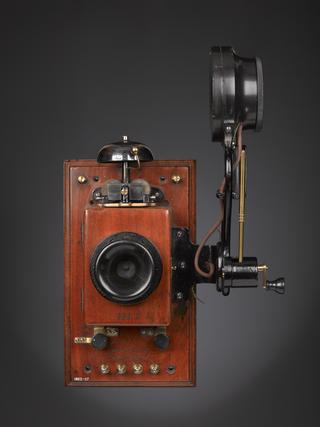Submarine cable laid across the River Medina, 1878
Submarine telegraph cable laid across the River Medina, Isle of Wight, 1878, recovered 1977. Believed used in A.G. Bell's telephone experiment between Cowes and Osborne House.
More
Submarine telegraph cable laid across the River Medina, Isle of Wight, 1878, recovered 1977. Believed used in A G Bell's telephone experiment between Cowes and Osborne House.
This cable is possibly one of the first examples of submerged telephone cables, and is believed to have formed part of a telephone link laid in January 1878 on the Isle of Wight across the River Medina between Cowes, Osborne House and Osborne Cottage. It was used by Alexander Graham Bell (1847-1922) to demonstrate his newly-invented telephone to Queen Victoria (1819-1901). Unfortunately the line from Cowes failed at the crucial moment but calls were successfully made between the Cottage and Osborne House.
- Measurements:
-
overall: 600 mm x 40 mm diameter, 2.48 kg
- Materials:
- metal (unknown)
- Object Number:
- 2004-102/1
- type:
- cable
- Image ©
- The Board of Trustees of the Science Museum










